Painting with gouache on paper is something you do to avoid the weight of painting with oilpaint on canvas. The technique is cheaper, easier and because you’re not doing a “PAINTING” it gives you more freedom. It’s also a way to try out ideas concerning composition and colour in a fast way. I’ve Always liked working with gouache. which has a chalky expression that I like and you can use it like watercolour, in layers and covering. Needless to say that I did a lot of it!
Con alma
In February 2022 I was in Madrid to take part in the Hybrid Art Fair with EX-MÊKH. The fair is a part of the Semana del Arte in the Spanish capital. Under the name Con Alma Ellen Rodenberg, Maarten Schepers and I changed a hotelroom into an art installation. Part of this installation was a diary that I wrote about the days we passed in Madrid. During this week, in which Russia started the war in Ukraine, it seemed rather surreal to be far from home as the news seeped in. I took quotes from my diary to write with charcoal on torn pieces of white painted packing paper. This work reminds me of shards of pottery which were used to write on in the Eastern Mediterranean before Christ which is why I used this technique before.
Back in my studio I decided to make a series of gouaches next to the shards. The basis is a colour that expresses the atmosphere of the day. A background I paint is often determined by the weather. On the other hand, the feeling of the day also has an influence on the colour. By doing this I want to give a total impression of the experiences by writing text fragments in the imagery I had at hand during the day.
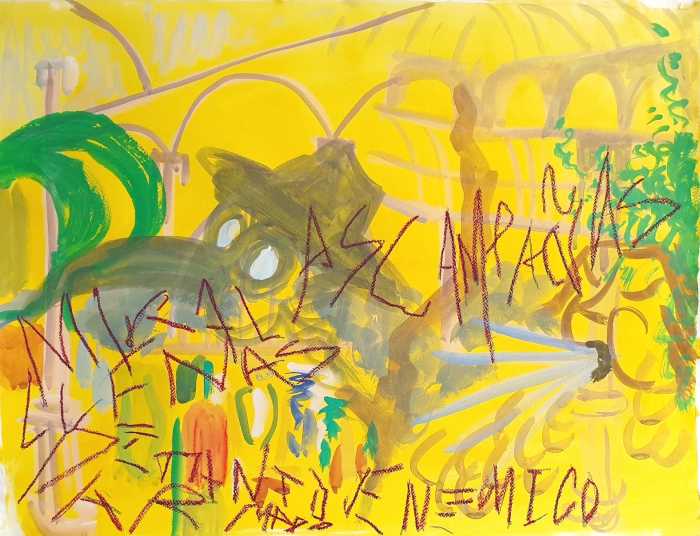 Tanto Enemigo Armado – 2023
Tanto Enemigo Armado – 2023
gouache and oilstick – 50×65 cm
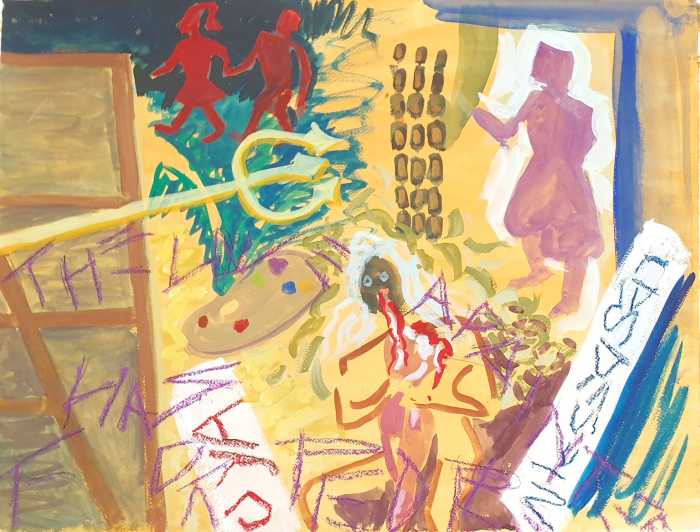 The Love a Painter has – 2023
The Love a Painter has – 2023
gouache and oilstick – 50×65 cm
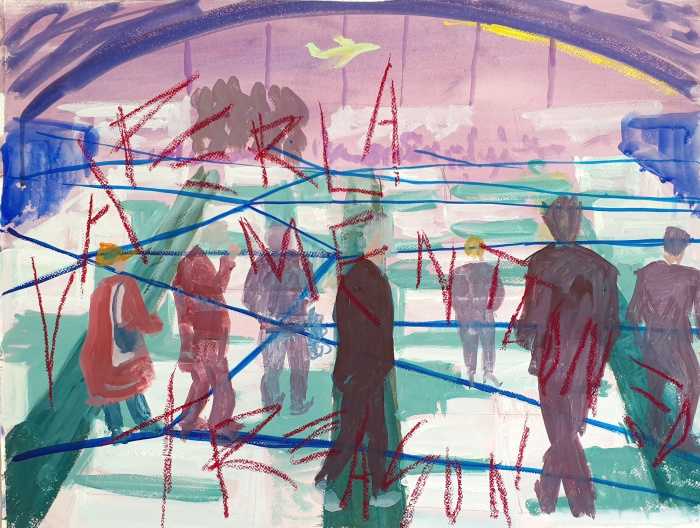 La perla mentioned treason – 2023
La perla mentioned treason – 2023
gouache and oilstick – 50×65 cm
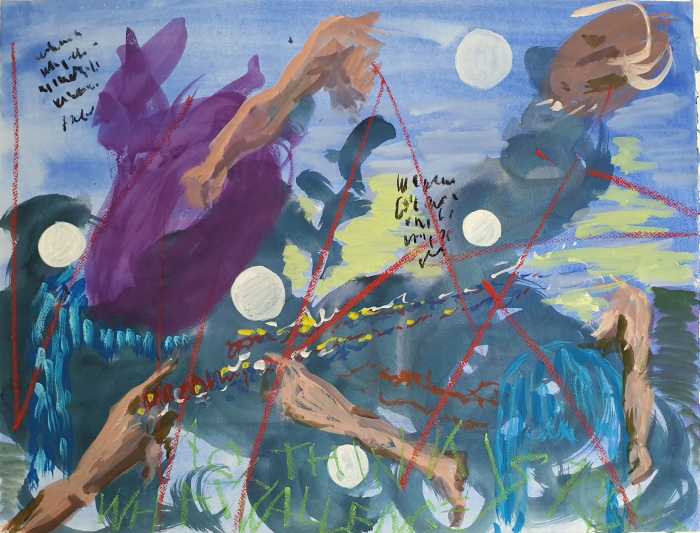 A Challenge to What We Think Is Right
A Challenge to What We Think Is Right
gouache and oilstick – 50×65 cm
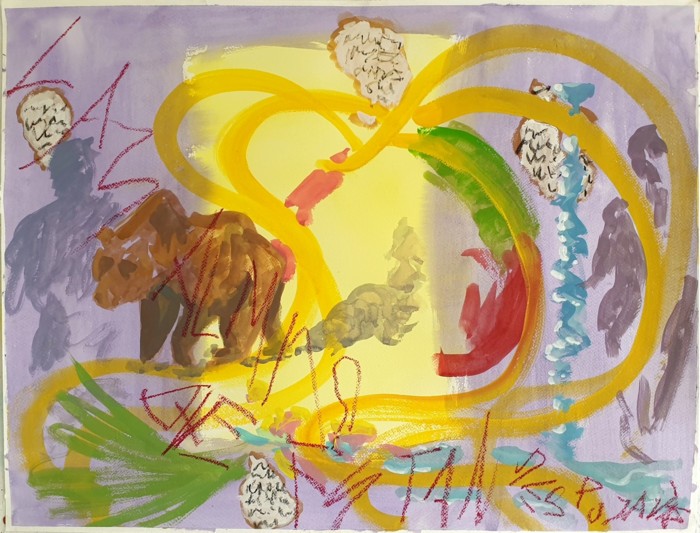 Las Almas Que Estan Despogadas
Las Almas Que Estan Despogadas
gouache and oilstick – 50×65 cm
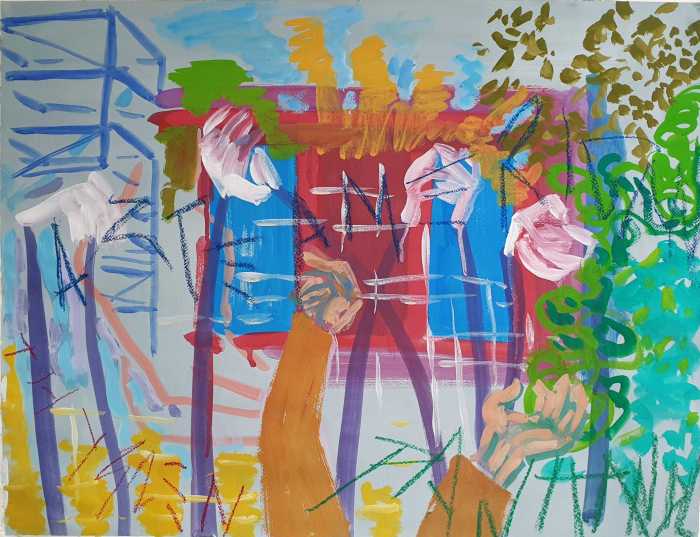 Arte Americano – 2023
Arte Americano – 2023
gouache and oilstick – 50×65 cm
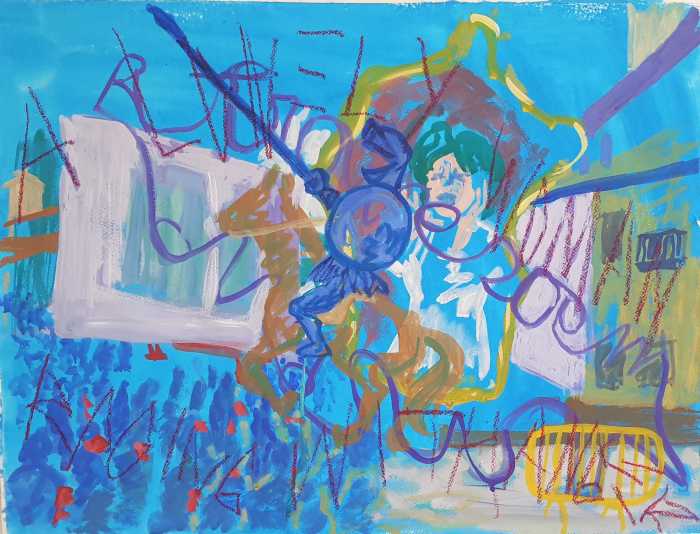 Raging with Anger – 2023
Raging with Anger – 2023
gouache and oilstick – 50×65 cm
Frans
In 2018 Sophie Gallery in Den Haag invited me for an exhibition in honour of my friend Frans van der Steen who had deceased 10 years before. I painted four gouaches experimenting with my diary-texts and memories of the atmosphere and with the context of the situations I wrote about. The texts describe my first encounter with Frans who was introduced to me by two friends of mine when I was in artschool. One is about my first visit to Eygalières in Provence where Frans would spend his summer-days and another is about a trip years later when my wife and me took Frans along to Provence in our car. We ended up in fierce summer rainstorms, arriving after fourteen hours of bad weather and traffic jams.
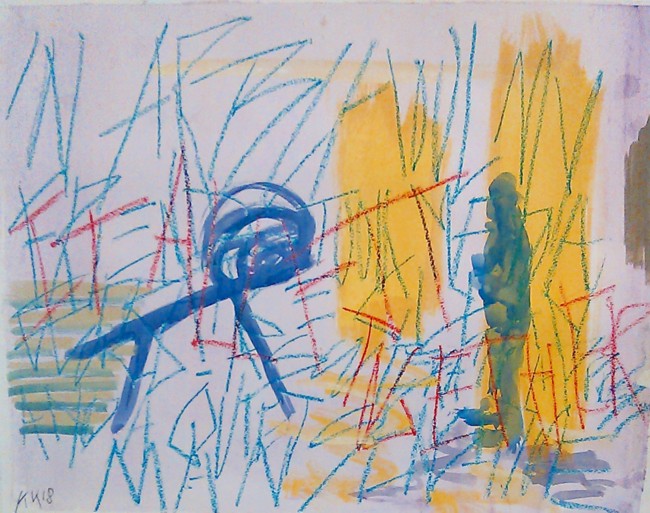 Frans – 2018
Frans – 2018
Gouache and oilpastel on paper – 50×65 cm
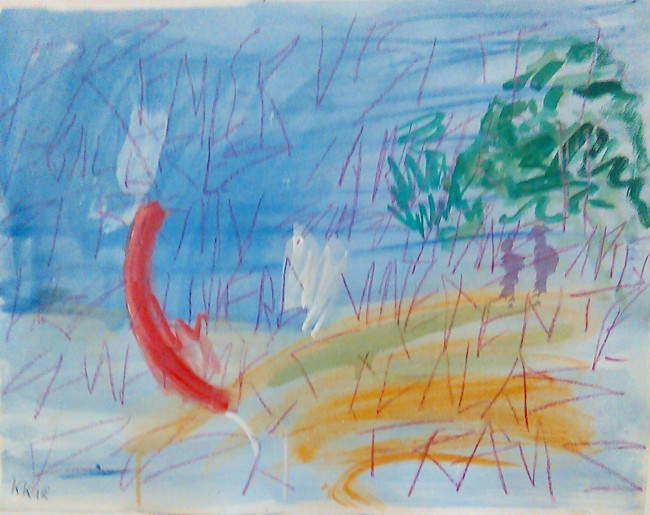 Première visite – 2018
Première visite – 2018
Gouache and oilpastel on paper – 50×65 cm
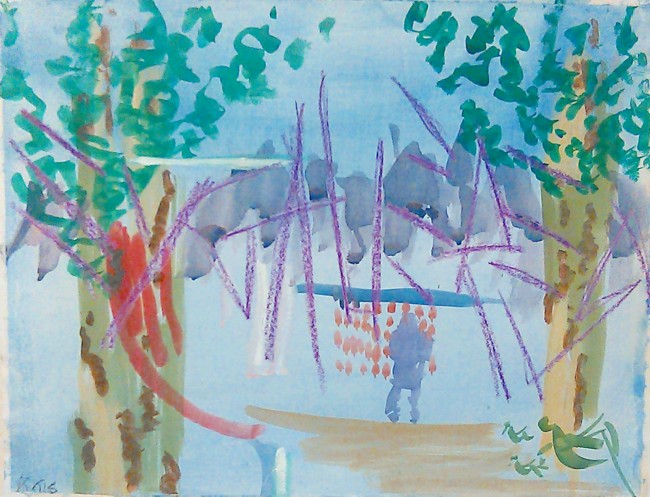 Eygalières – 2018
Eygalières – 2018
Gouache and oilpastelon paper – 50×65 cm
 Route du Soleil – 2018
Route du Soleil – 2018
Gouache and oilpastel on paper – 50×65 cm
Donna me prega
“Donna me prega” is a poem by Guido Cavalcanti about the form and nature of love which keeps intriguing me. I painted a series of gouaches about it for Platforms Project 2017 that I integrated in an installation: one was a memory of Athens where the Platonic ideas in the poem come from, one of a Tuscany landscape where the poem was written, after a painting I made of a landscape there earlier. The third is of the Bibliotheque Nationale in Paris where Ezra Pound wrote the translation of the poem which I read first. The pillars in the architecture are emphasized to refer to the Arab love-poetry that influenced Cavalcanti trough the French troubadours. The last gouache is of the Malieveld where I once read the poem aloud in the Malieveld-project.
The gouaches are fastened to a text that I wrote on the wall with woolen threads, a quote of Ezra Pound from one of his Canto’s: “Beauty is difficult” and the title of one of my paintings, “Eviction”. The last is about a story I heard of in the USA: a family was evicted from their house in Brooklyn in the middle of a blizzard. I wanted to confront social reality with art which I find a problem these days. The drawing on the right, “walk/don’twalk” is taken from the texts I wrote down in the USA where constant movement seems obligatory and reflection non-existent.
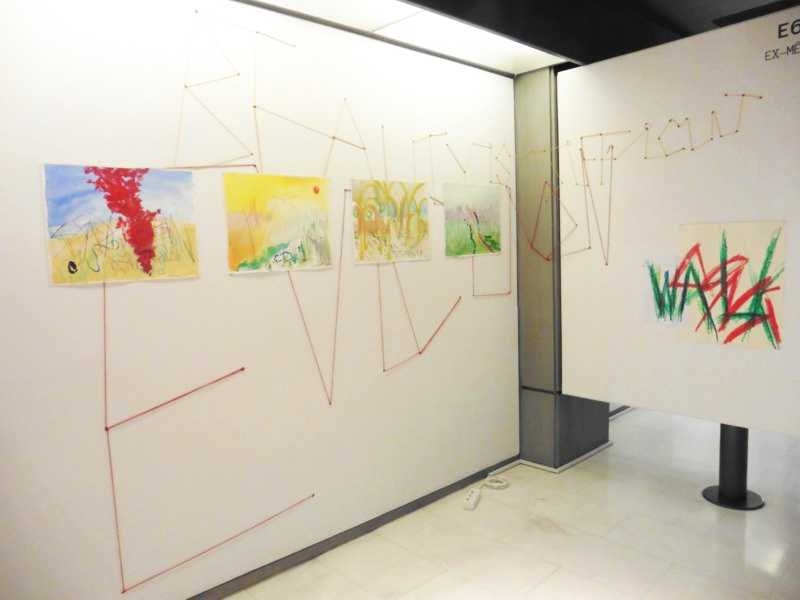
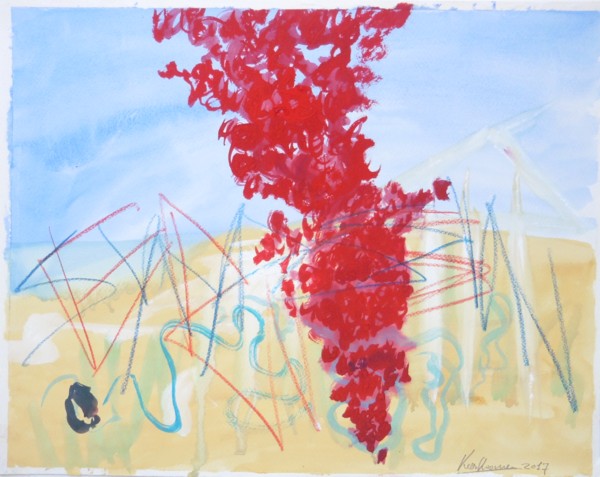 Athens – 2017
Athens – 2017
Gouache and colourpencil on paper – 30×40 cm
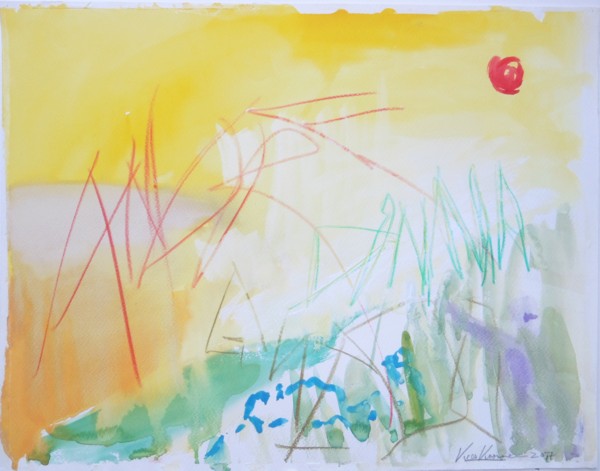 Tuscany – 2017
Tuscany – 2017
Gouache and colourpencil on paper – 30×40 cm
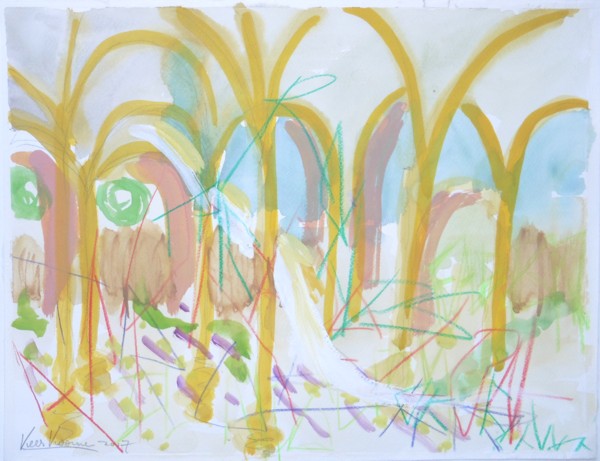 Bibliothèque Nationale de Paris – 2017
Bibliothèque Nationale de Paris – 2017
Gouache and colourpencil on paper – 30×40 cm
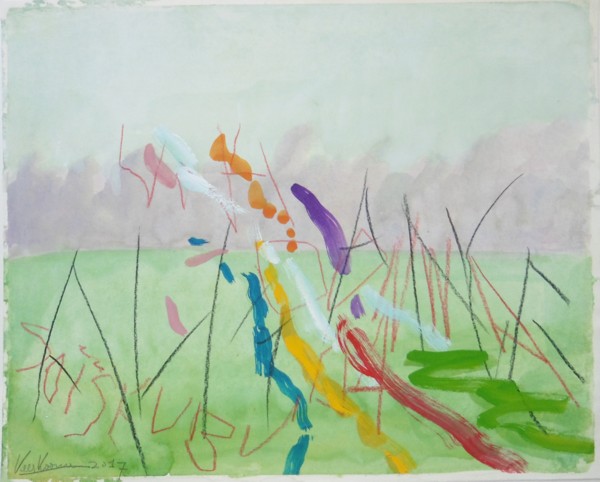 Malieveld – 2017
Malieveld – 2017
Gouache and colourpencil on paper – 30×40 cm
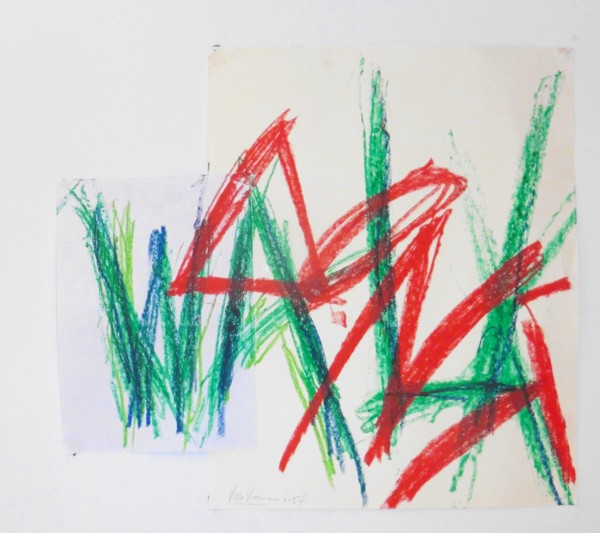 Walk, don’t walk – 2017
Walk, don’t walk – 2017
Oilstick on paper – 50×70 cm
Research USA
In 2016 I traveled in the USA with a grand from STROOM. I applied for research on Black Mountain College and some other influences I had during and right after Dutch art-school, when I studied at CCAC in Oakland, California. European culture now fascinated me, but still echoes of American culture haunted me, so I wanted to know the relevance of these influences in my present practice.
I decided to have as much talks and discussions as I could to capture the state of the nation. So I traveled Greyhound. Eventually this turned against me: this was the year that Trump campaigned to be president and the media were full of his retoric while the stories I heard and the people I spoke to talked about unemployment, poverty, evictions, devorce, unsufficient health-care, homelessness, hopelessness and more misery. It really got to me and my focus changed from my own intentions to the people instead. I wrote down quotes and descriptions in my diary. At home I made sketches of the people I met and wrote quotes in the sketches: The Pre-Trump Portraits. Here you can see some. I also started to make sketches for larger work I wanted to make, some sketches you can also see here. My art-memories about working together and publishing Ysland Magazine in the eighties and the way artists from New York socialized in bars and restaurants in the fifties. But also a sketch about the eviction I heard about. And there’s more coming!
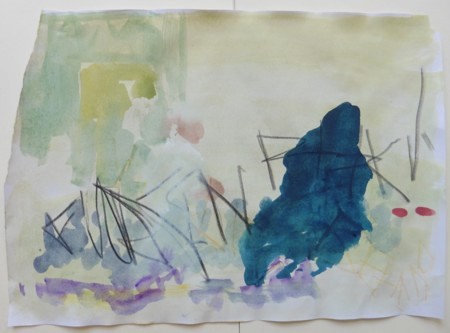 Port Authority – 2016
Port Authority – 2016
Charcoal and gouache on paper – 21×29,5 cm
 Prayer in limbo – 2016
Prayer in limbo – 2016
Charcoal, colourpencil and gouache on paper – 29,5×21 cm
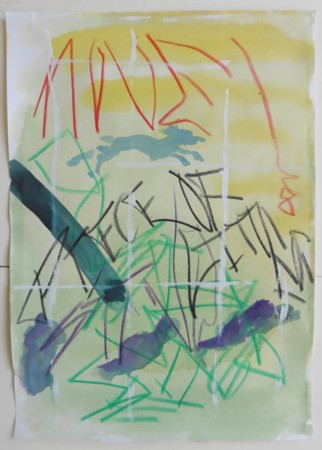 A night in Hell – 2016
A night in Hell – 2016
Charcoal colourpencil and gouache on paper – 29,5×21 cm
 Sophistication – 2016
Sophistication – 2016
Colourpencil and gouache on paper – 29,5×21 cm
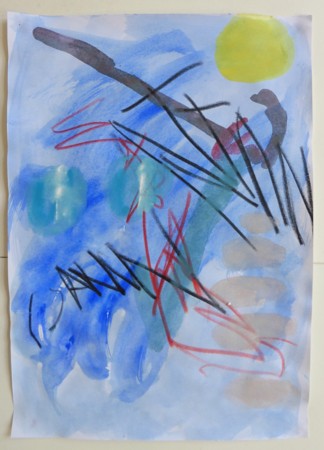 Damnation – 2016
Damnation – 2016
Gouache, charcoal and colourpencil on paper – 29,5×21 cm
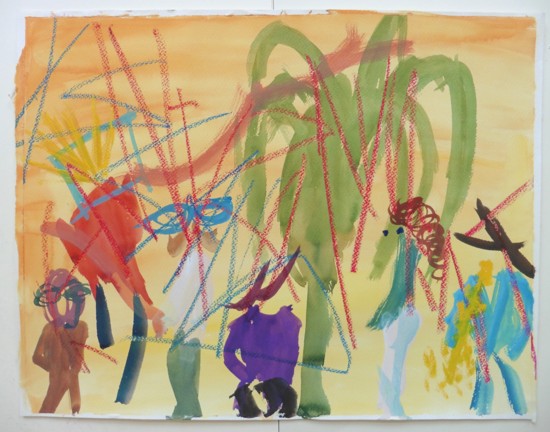 Alcatraz – 2017
Alcatraz – 2017
Gouache, charcoal and oilpastel on paper – 32×42 cm
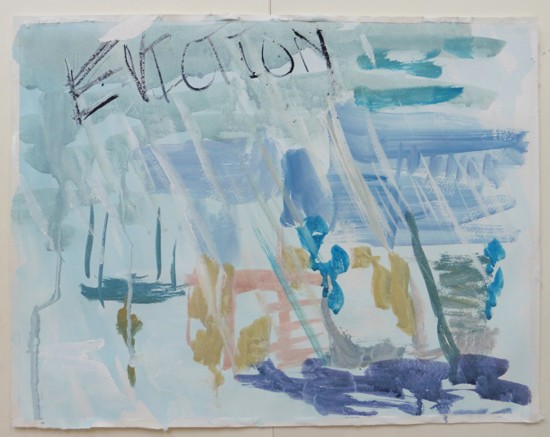 Eviction – 2018
Eviction – 2018
Gouache, charcoal on paper – 32×42 cm
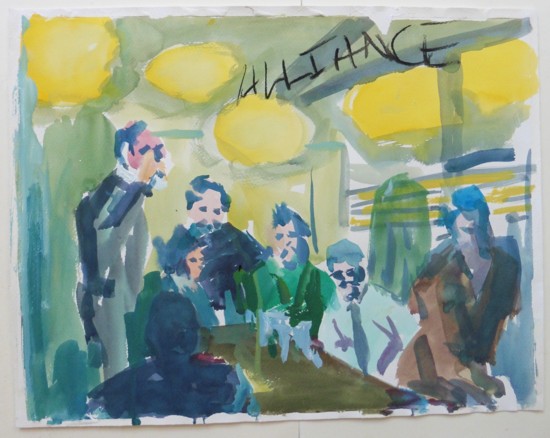 Alliance – 2017
Alliance – 2017
Gouache, charcoal on paper – 32×42 cm
First paintings containing text and image
The first painting with text and painting that I did in 2014 was on the basis of an early entry in my diary. I was invited to participate in “De Hommage” for which a number of painters made an ode to “Het Puttertje” of the famous Dutch artist Carel Fabritius. I had written about a book an uncle gave to me as a present, it contained one hundred masterpieces from the Rijksmuseum in Amsterdam. It said more about my uncle and his enthousiasm for my drawings than about “het Puttertje” which was in the Mauritshuis anyway. I duplicated the text on canvas and over it I painted a free rendition of the little bird. I loved it and I took two texts about my hitchhiking adventures in Germany for which I followed the same procedure: “Aquaplaning” and “Dillenburg”. Sketches are shown below. I showed the paintings in Berlin at the Augentausch-exhibition at A-Trans in 2015.
I suddenly realized that the lines in my hand are as individualistic as my face. It’s also a drawing in your hand, and you might interpret it as a selfportrait. I thought that if you would combine it with diary-text and imagery you would have a selfportrait at a certain moment in time. The four selfportraits are made by first painting a colour on paper in the atmosphere of the moment, than drawing the lines in my right hand over it and paint some imagery from the diary-text in simple strokes. The last element is a compressed version from that same text.
In the mean time I received a grant for a research-trip to Italy and the USA and I started to prepare by processing memories from my time at CCAC. You can see four examples of those in this series.
I was working from my diaries and started to integrate text in my paintings. I also presented the text as minimalistic drawing at Kunstvlaai 2012. The next step was to deconstruct the paintings in seperate elements, so I wrote the original texts of some entries of my diaries on paper after first colouring it with a hue in the colour of the atmosphere of the moment I wrote about. Then I painted a brushstroke in a colour that I would use in the painting over it. In some cases I would first paint the brushstroke and write over it. The almost abstract imagery in my new textpaintings would get an autonomous value by seperating the strokes which would still have a connection to the text. I also made sheets with just strokes that I used for the installation “Stèle” in Lana in Italy. The central piece was a column on which I wrote a diary-tekst on each side over which I painted an abstract pattern with brush strokes.
I started had recognized the importance of my diaries in my paintings. In the end of the nineties and the beginning of the new Millenium I kept a photographic diary: I took a picture each day with an Olympus Pen camera that had belonged to my father. I did this on slide-films, half format, so they had 72 pictures on a roll. It was great material and I scanned them all, together with a number of other old slides: interesting images for paintings! I started to make gouaches of a number of them of which you can see a selection here.
Underneath you can find a selection of exhibition-concepts that I did for EX-MÊKH, the independant platform I am part of. The Black Hole was used in the mêkh-stream exhibition in Atelier als Supermedium and l’Isle de mêkh was executed as sculpture of Maarten Schepers in W139-basement in 2007.
During the first ten years of the third millennium I did a lot of things. I had decided to put abstract elements in my work so I continued on the concept of an installation that I had built in the gallery of Maurits van de Laar in 1993: a black house with paintings on the outside that funtioned as windows and doors. The house was the inner world of the painter, or the studio if you like. Trough the paintings you could see what was going on inside. I painted all kinds of variations on this concept, the paintings on the house were monochrome mostly. You would get monochrome planes in an image. Later I decided to only use horizontal and vertical brushstrokes in my paintings which were about memories of traveling through Europe and the USA. This approached the transition of figurative painting into abstract painting in a way that I like. Here you can see some sketches.
Underneath you can also see some gouaches that I made about the muses. In this seriesI processed memories and people that I know and disciplines that I know about .
In the 90’s I painted a series of gouaches that were no
sketches but ideas that I worked out as independant work. I talked about my
work in terms of visual poetry and these were meant as such.
In the beginning of the nineties I began to travel to
Provence a lot and I got to know stories from there that mingled with the
classical litterature and the troubadour poetry that I read. I discovered an
abandoned ruin in Vaucluse which intrigued me. The fireplace was a mess but it
was a place that had been the centre of the house. People had sat around it and
stories had been told around it. I decided to make a book with stories around
the fireplace so I took a picture of the spot and put that next to a piece of
paper. I painted an element I knew over the photograph and reacted on that on
the paper next to it. The work was supposed to look as a book folded open and I
was satisfied there was some poetry in it as I was told.
These are some early sketches from traveling through Europe:
Spain, Greece and France were very popular after I left the USA. I did this
kind of work together with ideas of images I got on the way.
I studied in Oakland at CCAC in 1981 and 1982. I followed academic courses, because I felt I needed that and art-school in Den Haag did not provide those. Along, I did some painting and drawing. I also issued Ysland Magazine with friends, a DIY magazine for which each participant handed in fifty copies of a work they made and with this 50 magazines were stapled together that were devided over our subscribers in Holland and in the US. The painting I did was not very colorful, a dark romantic mood was what it shows when I look at it now.